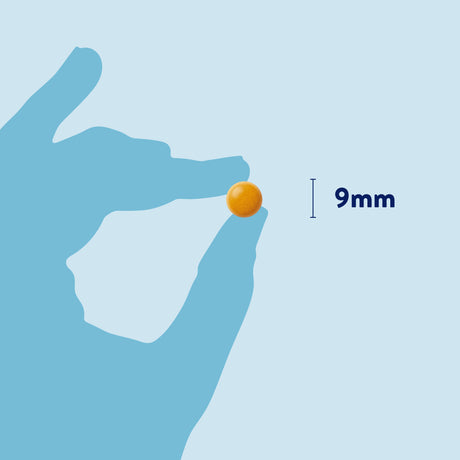As owners, we often look forward to our daily dog walks, whether it's a welcome break from work or family duties, or simply a chance to enjoy some fresh air. However, sometimes our dogs seem reluctant to join us. Why is that? We’re here to explain a bit more about why that might be happening and what you can do to help solve the underlying problem (if there even is one!)
1. Health issues
One of the reasons your dog might refuse to walk is because they're not feeling well. This could be something minor like sore paws, upset tummy, or a muscle strain from yesterday's activities. However, if your dog's behaviour changes dramatically – such as losing interest in walks and food or appearing weak and tired – it's always best to consult your vet for a thorough health check.
2. Getting older
As dogs age, they might develop stiff joints or arthritis, making walks more uncomfortable. Senior dogs often benefit from shorter, gentler walks and may need extra support to stay mobile. This is where our MoveWellia® Tablets can help. Designed for dogs experiencing joint issues, MoveWellia® offers advanced care to maintain comfort and mobility. Its expert formulation includes Boswellia, with 90% boswellic acids, which supports natural anti-inflammatory pathways in the body – ideal for dogs prone to inflammatory joint conditions.
3. Bad weather
Whilst many dogs love being outside no matter what, others might give you a "Really?" look when it's raining. For these weather-sensitive pups, consider doggy coats or jumpers to keep them comfortable. On the flip side, when it's hot out, dogs can feel just as lazy as we do. They might prefer lounging in a cool spot to walking around the block. It's important to listen to your dog and not overexert them in hot weather, as their fur coats (no matter how thick!) make it harder for them to regulate their temperature.
4. Comfy bed
Sometimes, your dog might just be too comfortable to move. If they're snuggled up in their favourite spot, the prospect of a walk might not seem so appealing. You might get a look that says, "Do we have to?" Just like us on a lazy Sunday afternoon.

5. Boredom
Dogs can get bored with the same old routine. If you're always walking the same route or at the same location, your dog might just be losing interest. Try mixing things up with a new walk, different environments, or adding games and training to your walks to keep them fun.
6. Anxiety or fear
Some dogs might be anxious about walking because of bad past experiences or fears of certain things (like loud noises or other dogs). In these cases, slowly helping them get used to these things and using lots of positive reinforcement can build their confidence.For extra support, try our Scullcap & Valerian Tablets to naturally reduce your dog’s stress and anxiety, without causing drowsiness. The blend of herbs supports your dog's natural calming pathways, helping with various anxieties from noise phobias to separation issues. Used daily, they can help your dog feel more relaxed and open to enjoying walks again. Perfect for anxious pups who need a little extra help to face the world!
7. Energy levels
Different dog breeds have different energy needs. Some dogs have naturally high energy levels, who need lots of exercise and stimulation, while others prefer shorter, calmer activities. Knowing what's normal for your dog's breed (and for your individual dog) can help you plan walks that suit them.
8. Mood swings
Yes, dogs have moods too! Just like us, they can have their off days. Maybe they're sulking because you didn't share your sandwich earlier, or they're just feeling a bit grumpy. If your usually enthusiastic walker suddenly seems uninterested, they might just be having a moment. Hormonal changes in female dogs can also play a big role in their mood and willingness to walk. They might be less keen to go out if they’re coming into season. It’s important to be patient and try and encourage them out at different points during the day.
How to help:
- Check with your vet to rule out any health problems if your pet has a sudden and consistent change of behaviour.
- Keep an eye on the weather, perhaps something as simple as waiting for the rain to stop will help keep your dog happier whilst out on the walk.
- Change up your walking routes and add fun activities during walks. You can buddy up on walks and arrange to meet up with friends or dogs they enjoy playing with.
- Use treats and praise to make walking more enjoyable.
- Adjust your walks to match your dog's energy levels and physical abilities.
- Be patient on their "off" days – tomorrow might be better!

Natural joint support
To help keep your dog moving easily and enjoying walks, especially as they get older, think about adding joint support supplements to their diet. Our JointWell® and MoveWellia® Tablets are made to support healthy joints and mobility in dogs of all ages, breeds and lifestyles.


MoveWellia® - Advanced joint care for dogs experiencing joint health challenges, including stiffness and slowing up. Expertly formulated with vets to deliver powerful joint support to maintain comfort and mobility.
Remember, every dog is different, and it might take some time to figure out why your dog isn't keen on walking. By paying attention to your dog's needs and giving them the right support, you can help make sure walks stay an enjoyable activity for both of you – even if some days that "walk" is just a quick trip around the garden!
Feel free to call us on 01308 897 272 or email us at advice@dorwest.com, if you have any questions about your pet! Plus, keep an eye out on our Instagram, TikTok & YouTube channel for more advice.






































